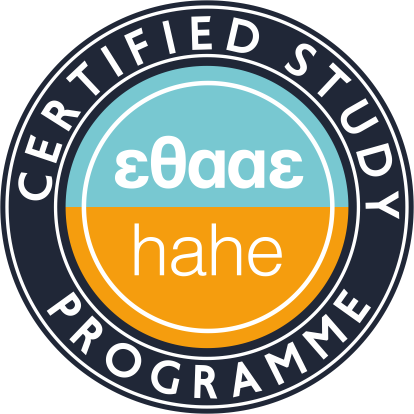THE OTTOMAN EMPIRE: INSTITUTIONS AND SOCIETY
Teaching Staff: Laiou Sophia
Course Code: ΙΟΘ101
Course Type: Compulsory
Course Level: Undergraduate
Course Language: Greek
Delivery method: Lectures
Semester: 2nd
ECTS: 5
The course examines the following topics: the political and social context of the establishment of the emirate of Osman in the Asia Minor and its expansion to the Balkans; the gradual transformation of the emirate into a multienthnic empire; the military slaves and the devşirme; the central and provincial administration; the urban and the agricultural economic structures; the adminsitration of justice; the Ottoman trade policy; the fiscal policy; the wars against the Holy Alliance and Russia and their results; the internal political turmoils in the 17th and 18th centuries; the religio-cultural developments; the Tanzimat period; the Abdülhamid II and the Young Turks; the Balkan Wars and the First World War.
The course aims to the familiarization of the students with the institutions of the Ottoman empire. After the successful completion of the course, the students will be able to understand the ways the empire functioned and how it affected the lives of its Muslim and non-Muslim inhabitants, both in Rumeli and Anatolia.
Syllabus
-Introduction: important political events in the Asia Minor during the 13th-14th centuries. The dominance of the emirate of Osman over the other Turkish emirates. The first sultans.
- 15th century: basic principles of the central and provincial structure, state centralism. The conquest of Constantinople and its resettlement, the policy of Mehmed II.
- The Ottomans and the Safavids. The military slaves, the devşirme, the sultanic harem. Territorial expansion.
- Categorization of the provinces. The non-Muslim Ottoman subjects. Administration of justice.
- Economic developments in the late 16th century and fiscal measures. The political role of the harem. The Celali rebellion. The dethronement and execution of the sultan Osman II.
-The Kadizadelis. The Ottoman scholars in the 17th century. Evliya Çelebi and the Ottoman guilds. The House of Köprülü. The war with the Holy Alliance and the Karlowitz treaty.
-Fiscal reforms in the late 17th century: cizye, malikâne. The role of the sarrafs. The tulip era. The Ottoman printing house.
-The Patrona Halil rebellion. The international trade and the capitulations, the Ottoman trade policy. The çiftliks and the ayans.
-Russo-Ottoman war, the treaty of Küçük Kaynarca. Nizam-ı Cedid and the dethronement of the sultan Selim III. The “ Sened-i İttifak”. The weakening of the power of the ayan. The destruction of the Janissary corps.
-The Egyptian issue. The beginning of the Tanzimat. Gülhane and the Hatt-ı Hümayun. Basic characteristics and evaluation of the Tanzimat.
-The demand for Constitution. The Eastern Question. Abdülhamid II.
-The Young Turks rebellion. The Balkan Wars and the First World War.
- Recapitulation
D. Howard, A History of the Ottoman Empire, Cambridge 2017
B. Tezcan, The Second Ottoman Empire, Cambridge, 2010.
İnalcık H.-Quataert D., Οικονομική και κοινωνική ιστορία της οθωμανικής αυτοκρατορίας, τ.Α-Β΄, Αθήνα 2008-2012
Finkel C., Οθωμανική αυτοκρατορία 1300-1923, Αθήνα 2005.
Quataert D., H οθωμανική αυτοκρατορία: οι τελευταίοι αιώνες, 1700-1922, Αθήνα 2006.
İnalcık H., Η οθωμανική αυτοκρατορία. Η κλασική εποχή, 1300-1600, μτφρ. Μ. Κοκολάκης, Αθήνα 2005
Faroqhi S., Η οθωμανική αυτοκρατορία και ο κόσμος γύρω της, Αθήνα 209
Goffman D., Η οθωμανική αυτοκρατορία και η πρώιμη νεότερη Ευρώπη, Αθήνα 2007
Teaching, use of power point, analysis of translated Ottoman sources, open e-class
Written or oral exams.
Back



